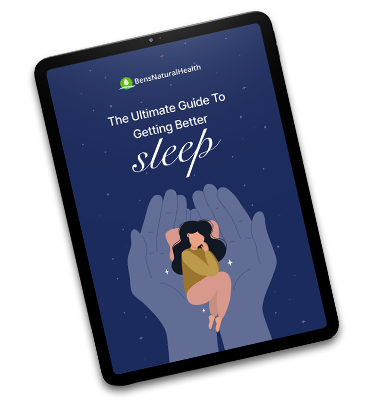- What are the side effects of Clindamycin?
- How to reduce adverse effects from Cleocin
- How long do Clindamycin’s adverse reactions last?
- Are there any long-term side effects of Clindamycin?
- Clindamycin side effects in the elderly
- Is Clindamycin a very strong antibiotic?
- What happens when you stop taking Clindamycin?
- Conclusion
- Source
Clindamycin (Cleocin) is derived from an antibiotic called Lincomycin.
The drug is used to treat a wide range of infections caused by many different bacteria, including bacterial vaginosis, pelvic inflammatory disease, endometritis, infections in the vagina, and lower respiratory tract infections.
Like many medications, Clindamycin can cause serious side effects.
This is why it is only used for serious infections that do not go away with other antibiotics.
We will discuss the adverse effects you may encounter with clindamycin and what to do about them.
What are the side effects of Clindamycin?
You may notice some symptoms when taking Cleocin, such as:
1) Nausea and Vomiting
You may experience nausea and vomiting while taking Clindamycin. Studies show that gastrointestinal symptoms are common with Clindamycin.
They are usually mild, but the vomiting may become serious. Contact your doctor if nausea or vomiting is persistent.
2) Diarrhea
Clindamycin and other antibiotics cause diarrhea. Cleocin can cause mild diarrhea, but sometimes it may be severe and life-threatening.
People who have colitis are at risk of getting worse diarrhea. Clindamycin causes changes in the bacteria that live in your gut. This leads to excessive growth of the bacterium Clostridioides difficile.
C. difficile bacteria live in your gut without any problems. But when they overgrow, they produce toxins, which can lead to diarrhea.
This could lead to serious diarrhea from a condition called clostridium-associated diarrhea (CDAD).
Clindamycin and some other antibiotics like cephalosporins and ampicillin can cause pseudomembranous colitis.
Contact your doctor if you have severe diarrhea. Your doctor will need to run a stool test to confirm whether you have C. difficile.
Clindamycin also causes irritation and ulcers in the throat in some people.
3) Abdominal pain
The gastrointestinal symptoms from Clindamycin may come with stomach cramps. It could be a sign of C. difficile infection. You may have a fever as well.
You should speak to your healthcare provider if you have severe abdominal pain.
4) Itching and rash
If you use topical Clindamycin, you could get a rash, itching, redness, or peeling of your skin.
5) Injection site pain
If you take the intramuscular form of Clindamycin, you may have pain or redness at the injection site. An abscess may also form at the site.
Get Your FREE Sleep Guide
- Learn how to naturally improve your sleep
- Dietary recommendations, supplements, and lifestyle changes
- Developed exclusively by our medical doctor
6) Metallic taste
Some people have an unpleasant taste that tastes like metal when they take Clindamycin. The metallic taste may occur when you take oral or IV Clindamycin.
7) Kidney injury
Cleocin can cause injury to your kidneys. If you have kidney disease, you should use this drug with caution.
Your doctor may need to stop the medication if you develop acute kidney injury.
8) Liver problems
Cleocin may cause some abnormalities in your liver. You may also notice yellowing of your eyes or skin (jaundice).
If you have liver problems, talk to your healthcare provider before starting Clindamycin.
9) Severe allergic or hypersensitivity reaction
A few people may have allergic reactions to Clindamycin. It is not common, but the hypersensitivity reaction may be severe.
Signs and symptoms of an allergy include:
- Swelling on the face
- Mouth, tongue, throat
- Difficulty breathing
- Itching
- Flushing
- Hypotension (low blood pressure)
10) Candidiasis
If you use a vaginal Clindamycin suppository, you may get a vaginal yeast infection as a side effect.
The symptoms are vaginal or vulva itching, copious, whitish vaginal discharge. You could also have small whitish patches on your tongue and mouth while taking Lincomycin. This may be a sign of oral candidiasis.
How to reduce adverse effects from Cleocin
If you have side effects while taking Cleocin, here are some tips to reduce the effects:
Speak to your doctor if the symptoms persist, are severe, or worsen
Serious side effects, including severe diarrhea and allergic reactions, may require immediate medical attention.
If the side effects are serious, you should stop taking the drug and talk to your doctor about alternatives.
Avoid taking alcohol while on antibiotics
Alcohol is safe to take with Clindamycin, but it may worsen the severity of the side effects. It is best to abstain from drinking while taking antibiotics.
It is not safe to drink alcohol with other antibiotics like metronidazole.
Consider taking a probiotic supplement
Probiotics encourage the growth of good bacteria in your gut. This decreases your likelihood of getting diarrhea.
Take Clindamycin and every other drug only the way it was directed
You can take oral Clindamycin with or without meals 6 hourly. If you have any questions or doubts, speak to your healthcare provider.
Make sure to finish all the antibiotics prescribed for you
Even if you feel better, complete the medication to clear off all the infection. Stopping Clindamycin before you finish the whole course will encourage antibiotic resistance.
Drink Clindamycin with a full glass of water
This will help to reduce the risk of having irritation or ulcers in your throat.

How long do Clindamycin’s adverse reactions last?
Most of the time, the side effects of Clindamycin resolve in a few hours or days after taking your first dose. The side effects may vary among different people.
They are mild for most people, but in some cases, the side effects may persist for a few weeks to months after you have stopped taking the drug.
Are there any long-term side effects of Clindamycin?
Some individuals may experience long-term side effects from Clindamycin, and some of them may continue after you have stopped taking the medicine.
However, not everyone will experience this, and the duration of these effects can vary.
If you have diarrhea while on Clindamycin, it may last up to 2 months after you stop taking it. People who have kidney or liver damage may also experience long-term side effects.
Clindamycin side effects in the elderly
Old age can make you vulnerable to certain conditions and affects the way your body works. Your body takes a longer time to break down drugs. As a result, elderly people have an increased risk of getting side effects from drugs.
Clindamycin is safe for older adults (age 65 and above). Older people with normal liver and kidney function can take Clindamycin.
Diarrhea
Studies have shown that elderly patients have an increased likelihood of getting diarrhea. In fact, the diarrhea may be worse in those who are 60 years and above.
To be on the safe side, the doctor may need to keep them on close watch while on Clindamycin.
Is Clindamycin a very strong antibiotic?
Clindamycin is a strong antibiotic that can treat many bacterial infections. Your doctor may prescribe Clindamycin if you have a serious infection especially if it cannot be resolved with other antibiotics.
Get Your FREE Low Testosterone Diet Plan
- The ultimate testosterone boosting diet
- Combined with exercise & lifestyle advice
- Developed exclusively by our nutritionist
What happens when you stop taking Clindamycin?
Completing the full course of Clindamycin as prescribed is crucial to ensure the infection is fully treated and to minimize the risk of antibiotic resistance.
If you don’t take the full course, the infection may reoccur, which makes it more difficult to treat.
Conclusion
Clindamycin, also called Cleocin, is an antibiotic. It is used to treat a wide range of bacterial infections.
You may experience side effects while taking Cleocin, including nausea, vomiting, and diarrhea. Contact your doctor if you notice any serious side effects that persist or get worse.
Explore More

Can You Take D-Mannose and Antibiotics Together To Treat UTIs?








